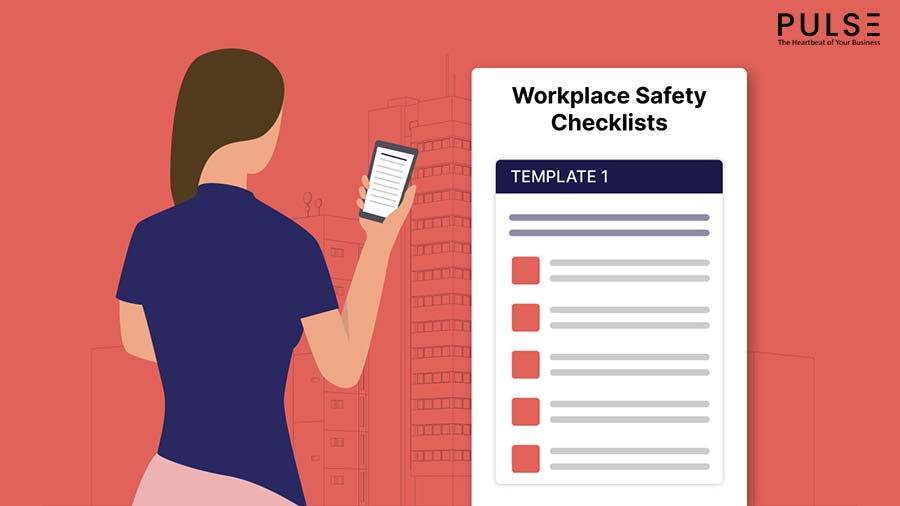Checklists are the primary form of inspection when it comes to risk assessment at the workplace. However, thanks to technology, fewer businesses use manual checklists in this day and age. Instead, businesses have started embracing digital and AI-empowered smart checklists to automate and simplify the supervision process. This article will discuss why smart inspection checklists are the way forward when it comes to EHS inspections.
Why Checklists are Important for Risk Assessment
Checklists help streamline the tasks at hand and are also used as evidence of risk assessment to show compliance during litigations and lawsuits.
However, a competent person understands that checklists are not helpful during time-critical situations like medical emergencies or workplace accidents.
In other ways, checklists are helpful in:
- Review and update workplace conditions
- Identify the risks and plan to mitigate them
- Document the findings for easy reference
- Determine who is most susceptible to harm
- Improve accountability at workplace
- Indirect uses such as a training tool, inspection document, and more
How Smart Checklists Improve Risk Assessment
The inspection checklists are all about accountability. The most significant advantage of intelligent checklists is the ability to centralize compliance and auditing data. You can easily automate reports and keep team members up to date with the progress. It makes the risk assessment efficient and hassle-free.
Another great feature of intelligent checklists is the use of logic within digital forms. It helps collect relevant data and suggest future courses of action, making the EHS inspection quick and easy for supervisors. When the data is collected, it is automatically uploaded and stored on a server for safekeeping.
While conducting inspection, supervisors and site inspectors can take photos, videos, and notes which can be added to the compliance reports to provide a comprehensive picture to the stakeholders.
Benefits of Risk Assessment Smart Checklists

Occupational hazards at the workplace are a severe threat. The advantages of having an intelligent inspection checklist during audits are as follows:
1. Employee Accountability
It is crucial to have some kind of accountability on employees’ part to ensure compliance regarding safety standards and occupational hazards. This means both employers and employees have to bear their share of the burden of keeping everyone safe at the workplace.
The EHS inspection checklist makes finding the person responsible for any lapse in safety rules and regulations easy. In addition, checklists make the safety inspection look like teamwork instead of an individual effort.
2. Organized Audits and Inspections
One of the most significant benefits of checklists is the ability to keep everything organized during audits. The supervisor has to check so many minor and major details during the workplace inspection that it is possible to miss or forget important tasks and to-dos.
With an intelligent checklist, you will have a complete picture of an upcoming inspection, such as when, where, and what kind of inspection to carry out and whom to relay the information. It makes the whole auditing process efficient for supervisors and management and saves time and resources that could be utilized elsewhere.
3. Better Communication Across Departments
Smart checklists can be shared across different platforms and departments within an organization. It makes the communication between stakeholders such as supervisors, managers, and C-suite quick and effortless. For instance, safety directors at a job site can determine which tasks have been completed and which are in progress.
If there are any shortcomings in the completed tasks, they can be instantly communicated to the supervisor in just a few clicks. In this way, you can set up comprehensive safety protocols that encompass several departments. For example, a streamlined communication will look like this: the dispatcher assigns the checklists, the operator completes them, and the service manager looks for any discrepancies before sending it to the safety manager for approval.
4. Regulatory Documentation Compliance
With inspection checklists, you can create a digital trail of all the documentation to meet the standards of regulatory bodies such as OSHA, FMCSA, and ANSI. In addition, these completed checklists can be used as evidence to show compliance during litigations and lawsuits. All related data is located at a central server which is always available for access.
Final Words
Checklists are not a new concept. Humanity has put them to use for hundreds of years. However, digitization has added new dimensions to the good ol’ checklists. Nowadays, you can now get all kinds of checklist templates as per your needs. Pulse is an EHS software that offers smart risk assessment checklists that use logic to maintain inspection flow. Register now to get access to a free trial of the professional edition of Pulse.
